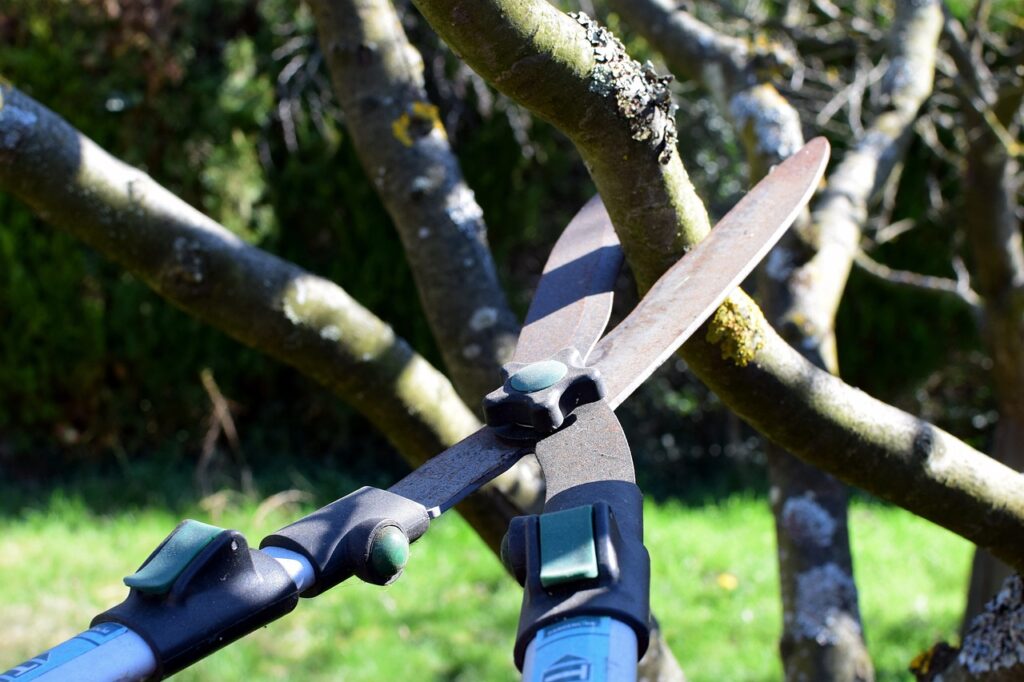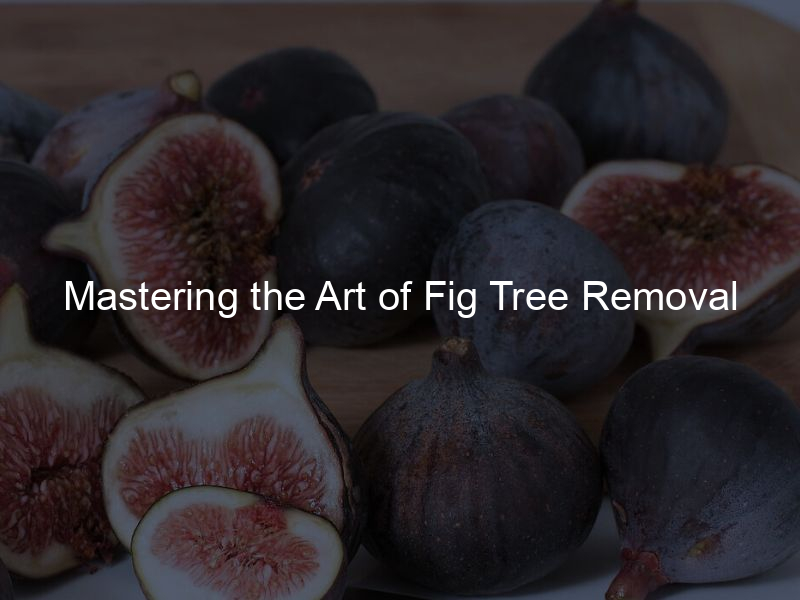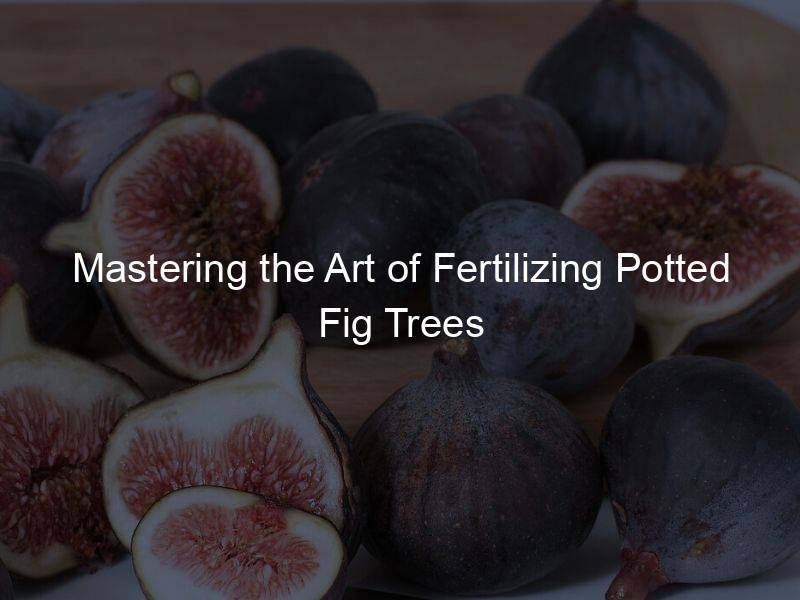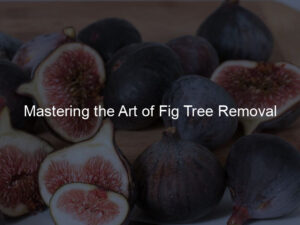Mastering the Art of Fig Tree Pruning: A Step-by-Step Guide
Welcome to the world of fig tree care! Fig trees are a wonderful addition to any garden, offering not only delicious fruit but also a beautiful aesthetic appeal. However, like any plant, they require proper care and maintenance to thrive. In this section, we will delve into the importance of fig tree maintenance and debunk some common misconceptions about fig tree care.
- Understanding the Importance of Fig Tree Maintenance
Fig trees, like all plants, require regular care and attention. This includes watering, fertilizing, and most importantly, pruning. Pruning is a crucial aspect of fig tree care as it helps to maintain the tree’s shape, promote healthy growth, and increase fruit production. According to a Wikipedia article, fig trees that are properly pruned can produce up to 50% more fruit than those that are not. Therefore, mastering the art of fig tree pruning is essential for any fig tree owner.
- Common Misconceptions about Fig Tree Care
There are several misconceptions about fig tree care that can hinder their growth and productivity. One common misconception is that fig trees do not require pruning. This is far from the truth. As mentioned earlier, pruning is essential for the health and productivity of a fig tree. Another misconception is that fig trees can thrive in any soil type. While fig trees are relatively hardy, they prefer well-drained, fertile soil. Understanding these misconceptions can help you provide the best care for your fig tree.
In the following sections, we will delve deeper into the art of fig tree pruning, including how to prune a fig tree, the best time for pruning, and case studies of successful fig tree pruning. Stay tuned!
Understanding How to Prune a Fig Tree
Trimming a fig tree is a vital aspect of its upkeep. This practice not only aids in controlling the tree’s form and dimensions but also boosts its well-being and yield. In this segment, we’ll explore the significance of trimming for a robust fig tree and the fundamental methods of fig tree trimming.
Pruning is a vital aspect of fig tree care. It helps in removing dead or diseased branches, thus preventing the spread of diseases and pests. Pruning also encourages the growth of new, healthy branches and fruits. It improves air circulation and sunlight penetration, both of which are essential for the tree’s health and fruit production. According to a Wikipedia article, regular pruning can increase the lifespan of a fig tree and enhance its productivity.
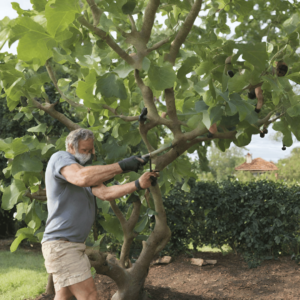
How to prune a fig tree: Eight simple steps
Step One: Before pruning your fig tree, it is important to understand the natural growth pattern of the tree. This will help you identify which branches need to be removed and when. Please be sure to look for any dead or diseased branches, as well as any that are growing in an undesirable direction.
Step Two: Once you have identified the branches that need to be removed, the next step is to decide when and how much pruning should be done. Generally, fig trees should only be lightly pruned in late winter or early spring before new growth begins.
Step Three: When it comes time to prune your fig tree, wear gloves and safety glasses for protection from sharp branches. Use pruning shears to make clean, precise cuts in order to avoid damaging the bark of your tree.
Step Four: Start by removing any dead or diseased branches first, as these can spread disease and weaken the overall health of the tree. Be sure to cut all the way back to where it meets another healthy branch or the main trunk.
Step Five: Next, remove any branches growing in an undesirable direction or crossing over other branches. If suckers are growing from the tree’s base, these should be removed, as well as removing any branches not growing from your selected fruiting wood. Try to shape the tree by cutting it to have a balanced crown with evenly spaced branches.
Step Six: Once all of the dead and diseased wood has been removed, you can begin to thin out the tree by removing some of the branches. This will help improve air circulation and allow more sunlight to reach the inner parts of the tree.
Step Seven: Finally, cut back any remaining branches by a third or half in order to encourage new growth. Be careful not to over-prune your tree, as this can lead to excessive new development and an unbalanced crown.
Step Eight: After pruning your fig tree, it is important to inspect the branches for any signs of infection or damage. If you notice any issues, treat them as soon as possible with a fungicide or insecticide in order to protect the health of your tree.
Mastering the art of fig tree pruning requires practice and patience. But with the right knowledge and techniques, you can ensure your fig tree’s health and productivity.

When to Prune Fig Trees
- General guidelines for pruning fig trees. Pruning fig trees is an essential part of their care and maintenance. The best time to prune your fig tree is during the late winter or early spring when the tree is dormant. This is because the tree is not actively growing and the risk of disease transmission is lower. However, it’s important to note that fig trees are quite resilient and can tolerate pruning at other times of the year if necessary. Always use sharp, clean tools to make clean cuts and avoid causing unnecessary damage to the tree.
- When to prune fig trees in Georgia? In Georgia, the climate is generally warm and humid, which is ideal for fig trees. The best time to prune fig trees in Georgia is in late winter or early spring before the new growth starts. This allows the tree to focus its energy on producing new, healthy growth in the spring. However, if you notice any dead or diseased branches, you should remove them immediately, regardless of the time of year.
- When to prune fig trees in NC? North Carolina has a diverse climate, with coastal, piedmont, and mountain regions. Fig trees can grow well in all these regions, but the timing for pruning may vary slightly. In general, the best time to prune fig trees in North Carolina is also in late winter or early spring. However, in the colder mountain regions, you may want to wait until the risk of frost has passed to avoid frost damage to new growth.
Can I Prune a Fig Tree in Summer?
Pruning a fig tree is an essential part of its care and maintenance. However, the timing of the pruning can significantly impact the health and productivity of the tree. One common question that garden owners often ask is whether they can prune a fig tree in summer. Let’s delve into this topic.
- Understanding the Best Seasons for Pruning
Fig trees are generally pruned during the dormant season, which is typically in late winter or early spring. This is because the tree is not actively growing during this period, making it less likely to suffer from stress or damage due to pruning. However, light pruning can be done at any time of the year to maintain the shape of the tree and remove dead or diseased branches. Wikipedia provides more information on the best seasons for pruning fig trees.
- Pros and Cons of Pruning a Fig Tree in Summer
Pruning a fig tree in summer has both advantages and disadvantages. On the positive side, summer pruning can help control the size of the tree and improve air circulation, which can prevent diseases. It can also stimulate the growth of new, healthy branches.
On the downside, summer pruning can stress the tree as it is actively growing during this period. It can also reduce the yield of figs as the tree may divert its energy towards healing the pruned areas instead of fruit production. Therefore, if you decide to prune in summer, it’s advisable to do light pruning and avoid cutting back too many branches.
Wrapping up, you can indeed trim a fig tree in the summer, but it’s typically advisable to save the major cuts for the dormant season, keeping summer trims to minor upkeep. Don’t forget, that the purpose of trimming is to boost the tree’s health and yield, so it’s crucial to do it right and at the appropriate time.

Pruning Fig Trees in Pots
Are you ready to dive into the world of fig tree pruning? It’s an essential part of caring for your potted fig tree. Not only does it keep your tree looking neat and tidy, but it also encourages healthy growth and bountiful fruit. Let’s walk through the process of pruning a fig tree in a pot and discuss some pitfalls to steer clear of.
- How to prune a fig tree in a pot
Pruning a fig tree in a pot is a simple process if you follow these steps:
-
- Prepare your tools: You will need a pair of sharp pruning shears. Make sure they are clean to prevent the spread of disease.
- Identify the branches to prune: Look for branches that are dead, diseased, or crossing over each other. These are the branches you should prune first.
- Make the cut: Cut the branches at a 45-degree angle, about 1/4 inch above a bud that is facing the direction you want the new growth to take.
- Clean up: After pruning, clean up the cut branches and leaves from the pot to prevent the spread of disease.
- Common mistakes to avoid when pruning fig trees in pots
While pruning your fig tree, avoid these common mistakes:
-
- Over-pruning: Don’t remove more than 1/3 of the tree at a time. Over-pruning can stress the tree and reduce its fruit production.
- Pruning at the wrong time: The best time to prune a fig tree is in the late winter or early spring when the tree is dormant. Pruning during the growing season can lead to sap loss and stress the tree.
- Not cleaning tools: Always clean your pruning tools before and after use to prevent the spread of disease.
Feeling overwhelmed by the thought of trimming your potted fig tree? Don’t worry! With the right guidance, you’ll soon be a pro at it. The secret to effective trimming lies in understanding what your tree requires and acting accordingly.
Can I Prune a Fig Tree in Spring?
Ever pondered about the perfect season for fig tree pruning? Spring is indeed a suitable time! But, why is it beneficial, and how should you go about it? Let’s find out.
- Benefits of pruning a fig tree in spring
Pruning your fig tree in spring has several benefits. Firstly, it helps to control the size of the tree, making it easier to manage. Secondly, it promotes the growth of new, healthy branches. Lastly, it helps to increase the yield of figs. According to a study on fig tree cultivation, regular pruning can increase the yield by up to 20%.
- Can I prune my fig tree in March?
Yes, you can prune your fig tree in March. In fact, late winter to early spring (February to March) is the best time to prune fig trees. This is because the tree is still dormant, and pruning at this time helps to stimulate new growth when the tree wakes up in the spring. However, make sure to avoid pruning during frosty periods as this can damage the tree.
Don’t forget, that mastering the skill of trimming your fig tree might take some time and practice. So, if you don’t nail it on your first try, don’t sweat it! As you continue to learn and grow, you’ll become a pro at maintaining your fig tree and reaping a plentiful fig harvest.
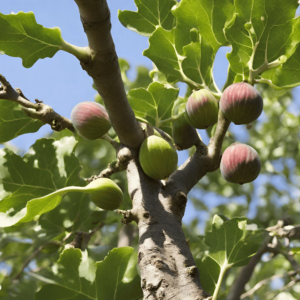
Case Studies: Successful Fig Tree Pruning
Ready to explore some real-world instances of triumphant fig tree trimming? These instances will offer you hands-on knowledge and advice that you can utilize in your personal green space.
1. Case study 1: Fig tree pruning in Georgia
In Georgia, a garden owner named Martha had a fig tree that was growing too large for her small backyard. She decided to prune it back to a manageable size. Martha started by removing all dead and diseased branches. Then, she pruned back the remaining branches to about one-third of their original length. This allowed more sunlight to reach the inner branches, promoting healthier growth. After a year, Martha’s fig tree was thriving, producing more figs than ever before. This case study shows the importance of regular pruning and the positive impact it can have on a fig tree’s health and fruit production.
2. Case study 2: Fig tree pruning in NC
In North Carolina, a fig tree owner named John had a different problem. His fig tree was not producing any fruit. After researching, he learned that over-pruning could be the cause. John had been removing too many branches, which stressed the tree and hindered fruit production. He decided to adopt a more conservative pruning approach, only removing dead and diseased branches. After a year, John’s fig tree started producing fruit again. This case study highlights the importance of not over-pruning and understanding the specific needs of your fig tree.
Ever wondered how to keep your fig tree in top shape? It’s all about striking the right balance! Pruning too much can stress your tree, while not pruning enough can hinder its growth. The key is to understand your fig tree’s unique needs and prune accordingly. This way, you’ll become a pro at keeping your fig tree healthy and happy.
Key Takeaways: Mastering Fig Tree Pruning
So, we’ve reached the end of our fig tree pruning journey. What have we learned? Let’s take a moment to revisit the crucial tips and tricks we’ve discussed. This handy summary will act as your cheat sheet, helping your fig tree flourish and yield a plentiful crop.
- Recap of fig tree pruning techniques:
Pruning is a vital part of fig tree care, contributing to the tree’s health and productivity. The basic techniques involve identifying the branches to prune, making the cut at a 45-degree angle, and cleaning up afterward. Remember, it’s best to do heavy pruning during the dormant season and limit summer pruning to light maintenance tasks. For fig trees in pots, pruning helps maintain their shape and promotes healthy growth. If you’re considering pruning in spring, do so with caution to avoid frosty periods.
- Final tips for successful fig tree care
Regular watering, fertilizing, and pruning are the pillars of fig tree care. Avoid common misconceptions such as the belief that fig trees do not require pruning or can thrive in any soil type. Each fig tree has specific needs, and understanding these is crucial for its care. Over-pruning can be as harmful as not pruning at all, so find a balance that promotes healthy growth without stressing the tree. Lastly, always clean your tools before and after pruning to prevent the spread of diseases.
Keep in mind, becoming proficient in fig tree trimming is a journey that requires patience and practice. However, with these essential tips, you’re well on your way to becoming a fig tree-trimming maestro. Enjoy your trimming session!
